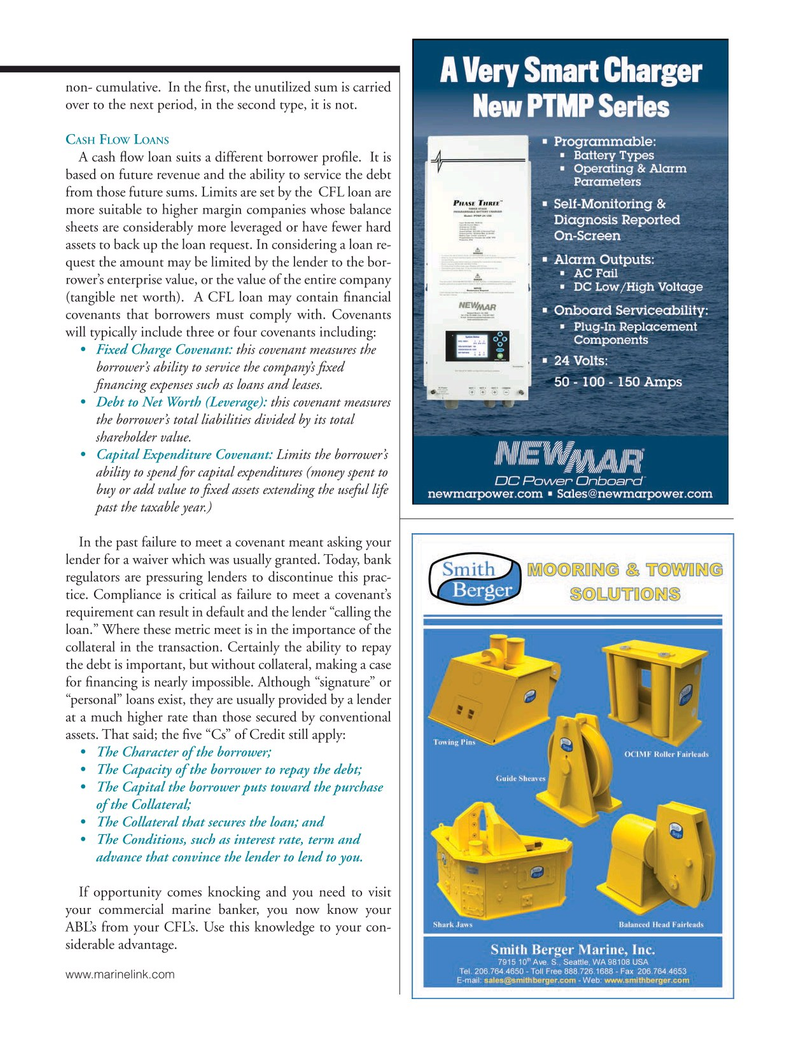
Page 23: of Marine News Magazine (October 2015)
Salvage & Spill Response
Read this page in Pdf, Flash or Html5 edition of October 2015 Marine News Magazine
non- cumulative. In the ? rst, the unutilized sum is carried over to the next period, in the second type, it is not.
C F L
ASH LOW OANS
A cash ? ow loan suits a different borrower pro? le. It is based on future revenue and the ability to service the debt from those future sums. Limits are set by the CFL loan are more suitable to higher margin companies whose balance sheets are considerably more leveraged or have fewer hard assets to back up the loan request. In considering a loan re- quest the amount may be limited by the lender to the bor- rower’s enterprise value, or the value of the entire company (tangible net worth). A CFL loan may contain ? nancial covenants that borrowers must comply with. Covenants will typically include three or four covenants including: • Fixed Charge Covenant: this covenant measures the borrower’s ability to service the company’s ? xed ? nancing expenses such as loans and leases.
• Debt to Net Worth (Leverage): this covenant measures the borrower’s total liabilities divided by its total shareholder value.
• Capital Expenditure Covenant: Limits the borrower’s ability to spend for capital expenditures (money spent to buy or add value to ? xed assets extending the useful life past the taxable year.)
In the past failure to meet a covenant meant asking your lender for a waiver which was usually granted. Today, bank regulators are pressuring lenders to discontinue this prac- tice. Compliance is critical as failure to meet a covenant’s requirement can result in default and the lender “calling the loan.” Where these metric meet is in the importance of the collateral in the transaction. Certainly the ability to repay the debt is important, but without collateral, making a case for ? nancing is nearly impossible. Although “signature” or “personal” loans exist, they are usually provided by a lender at a much higher rate than those secured by conventional assets. That said; the ? ve “Cs” of Credit still apply: • The Character of the borrower; • The Capacity of the borrower to repay the debt; • The Capital the borrower puts toward the purchase of the Collateral; • The Collateral that secures the loan; and • The Conditions, such as interest rate, term and advance that convince the lender to lend to you.
If opportunity comes knocking and you need to visit your commercial marine banker, you now know your
ABL’s from your CFL’s. Use this knowledge to your con- siderable advantage.
www.marinelink.com
MN Oct15 Layout 18-31.indd 23 9/21/2015 11:09:07 AM

 22
22

 24
24
